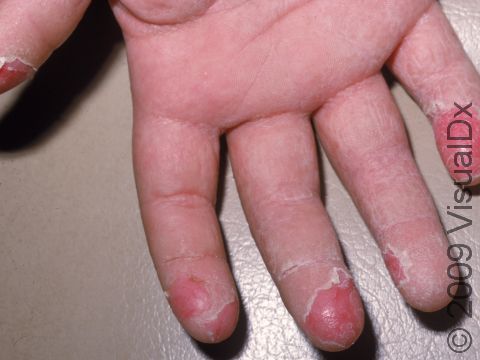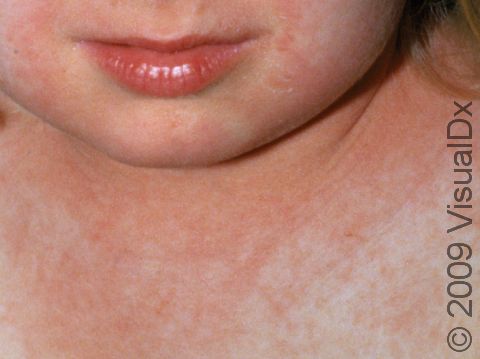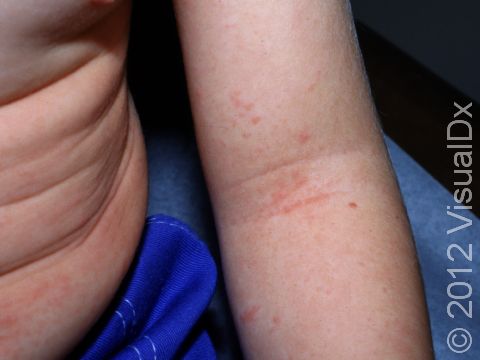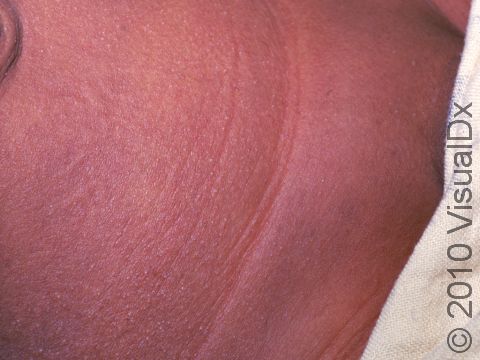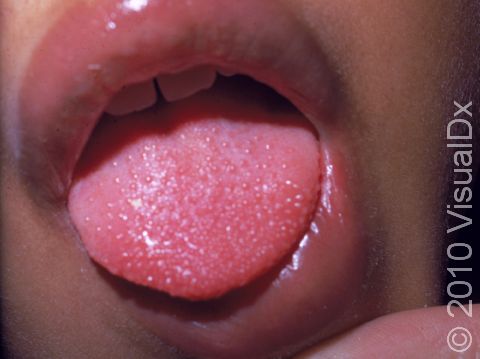Scarlet Fever
Scarlet fever is a contagious infection of the upper respiratory tract (mostly the throat) that characteristically has a red, sandpaper-like rash. The infection is caused by a poison (toxin) produced by a bacterium called group A streptococcus. The rash appears 1–2 days after onset of symptoms (ie, sore throat and fever) and starts on the neck and spreads downward on the body. The rash generally covers all of the skin on the body with the exception of the face. Applying pressure to the rash will cause the skin to turn white. After 3–4 days, the rash begins to fade, and sometimes the skin peels when the rash disappears, similar to sunburn.
Who's At Risk?
Scarlet fever is encountered much less frequently today than it was in the past, and it is very rare in infants, as they are protected by their mother’s immune system components that prevent infection (antibodies) given to them at birth. Scarlet fever occurs in cycles in the population, depending on the strength of the bacterium. It is spread by fluids from the airways (ie, cough, saliva, mucus).
Signs & Symptoms
A sandpaper-like rash of 1–2 mm, red bumps, which merge together, starting on the neck, and then move to the trunk and finally to the arms and legs (extremities). The rash of scarlet fever can be slightly itchy. If it develops on body creases (armpits, elbow folds), red streaks may appear.
Fever, chills, body aches, nausea, vomiting, and loss of appetite may occur with scarlet fever.
When the throat is the main area of infection, the tonsils may become enlarged, red, and tender. Other areas (lymph nodes) in the neck may become swollen. At first, the tongue has a white coating, giving a “white strawberry tongue” appearance, which then falls off (sheds) to reveal a bright red strawberry tongue. The rash does not affect the palms and soles at first, but later on, these areas may peel. The rash usually lasts for 4–5 days, and as it fades (subsides), skin on the neck and face start to peel, and eventually the hands and feet start to peel as well.
Self-Care Guidelines
With scarlet fever, it is difficult to avoid infection of others in the household who are not immune to the infection. However, you might try to:
- Keep eating and clothing items used by an ill child away from other people, and wash them in hot soapy water.
- The child’s caregivers should wash their hands frequently.
- Keep the child comfortable with acetaminophen (Tylenol®) or ibuprofen for fever relief.
- Have your child eat soft foods, drink plenty of liquids, and apply lotions such as calamine for itching, if needed.
Treatments
The doctor will usually do a throat or skin culture or a rapid strep test to confirm the child’s diagnosis. If strep infection is confirmed, prescription antibiotics will be prescribed, to be taken for about 10 days.
Visit Urgency
Call your child’s doctor if you suspect that the child may have scarlet fever.
Trusted Links
References
Bolognia, Jean L., ed. Dermatology, pp.1119-1120. New York: Mosby, 2003.
Freedberg, Irwin M., ed. Fitzpatrick’s Dermatology in General Medicine. 6th ed. pp.1871-1873. New York: McGraw-Hill, 2003.
Last modified on August 16th, 2022 at 2:44 pm

Not sure what to look for?
Try our new Rash and Skin Condition Finder
